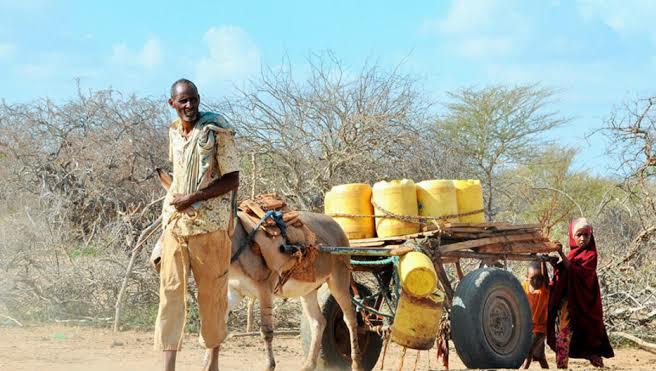NAIROBI, Kenya, May, 14 – The number of people in need of humanitarian assistance has risen sharply, with approximately 40.4 million people facing high levels of food insecurity across the IGAD region.
IGAD estimates that 8.1 million people are food insecure in Ethiopia, 3.5 million in Kenya, 7.7 million in Somalia, 8.9 million in South Sudan, 10.6 million in Sudan, and 1.6 million in Uganda.
The most current estimates by experts across IGAD Member States show that the number has increased by 30 per cent from the 29 million that had been recorded at the beginning of April 2022.
This was revealed Friday during a high-level ministerial meeting on the ongoing drought in the IGAD region that took place in Nairobi at the invitation of IGAD’s Executive Secretary Dr Workneh Gebeyehu.
In his opening remarks, Dr Gebeyehu called for an immediate increase in the emergency response, with a specific appeal for a total of 6.3 billion US dollars, to address the drought situation in the region.
“I appeal to the respective governments, humanitarian partners, and international donors, to direct all efforts towards mobilising the necessary resources to prevent a further worsening of the humanitarian crisis in our region,” he said.
Addressing regional governments and international partners, the Executive Secretary noted that all in attendance agreed that the next six months were extremely critical to save lives and livelihoods.
Cabinet Secretary for Public Service, Gender, Senior Citizens Affairs and Special Programmes Prof. Margaret Kobia during the IGAD Ministerial Meeting on Response to Drought said the impact of the drought crisis has led to registered livestock mortality of 1.6 million across all species.
She said this in a speech read on her behalf by the Chief Administrative Secretary (CAS) for Labour and Social Protection Abdul Bahari.
Prof. Kobia noted that the Kenya Government, in response to the current drought crisis, has provided more than Sh8.7 billion equivalent to USD 79.1 million for interventions across livestock, water, health and nutrition, social protection and drought coordination.
“Overall, the population in Kenya in need of food assistance has risen from 2.8 million four months ago in December last year to the current 3.5 million,” she added warning that despite the rains received in some parts of Arid and Semi-arid Lands (ASAL), “the situation will take time to stabilize, therefore, expect this number to persist until the next rains season”.
Director of IGAD’s Climate and Applications Centre (ICPAC) Dr Guleid Artan explained that for pastoral communities, recovery after drought is always the most challenging aspect of the entire scenario adding that it takes on average 5 years to build livestock back from one episode of drought.
In their communiqué, IGAD Member States acknowledged the severity of the situation and called on members to look beyond immediate assistance and rethink the region’s approach to resilience. The strategy adopted highlights the need to comprehensively address the disasters and climate risks through effective Disaster Risk Reduction actions for sustainable development.
The meeting Review of the Current Drought Disaster in IGAD Region brought together Ministers responsible for Disaster Risk Management in Djibouti, Kenya, Somalia, South Sudan, and Uganda, joined by donors and international development actors to take stock of the situation, assess the immediate humanitarian needs, long-term resilience programming, and gaps in funding across the region.
Want to send us a story? Contact Shahidi News Tel: +254115512797 (Mobile & WhatsApp)


